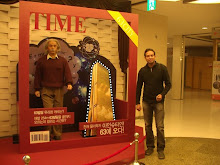
Education for the gifted was established not only to respond to the globalized diversified society of the 21st century, but also to develop human resources and guarantee equal opportunity to education that meets the student’s aptitudes and needs, as prescribed by the Constitution of the Republic of Korea. In 2000, the Gifted Students Education Promotion Act set a legal foundation for the education of gifted students and in March of 2002, Education for gifted students was implemented nationwide. The purpose of this program is to help individual students realize their potential and use their talents to build a stronger nation. As of 2008, one school for gifted students and 265 education centers for the gifted were under operation, and 580 classes for the gifted were offered at primary and secondary schools.
Educational institutions for gifted students are divided into schools, special classes, and education centers for the gifted. The institutional arrangements in support of gifted student education include the above-mentioned Gifted Students Education Promotion Act, the gifted Students Education Promotion Committee, and education centers for the gifted. Elementary, middle, and higher schools provide classes for the gifted students. Education centers also offer classes to gifted students.

While the gifted program originally focused on math and science, it gradually expanded to cover informatics, arts, physical education, creative writing, humanities, and social science. It led to the establishment of the Korean National Institute for the Gifted in Arts in September 2008, with the support of government funding. Teachers undergo basic training (60 hours), advanced training (120 hours), and overseas training (60 hours) to acquire the skills necessary for teaching gifted children. The Korea Educational Development Institute (KEDI) and Korea Advanced Institute of Science and Technology (KAIST), designated as the national research centers for the gifted, conduct research on and develop pedagogy for gifted children.
In 2009, Seoul Science High School is expected to be converted into a school for the gifted. The Primary and Middle School Education Act and the Gifted Education Act designed specialized high schools and other schools for the gifted. As of 2008, about 50,000, or 0.72 percent of elementary and middle school students participated in education for the gifted (Education in Korea, 2009). In 2005, a program was undertaken to identify and educate the gifted children of socioeconomically underprivileged people. Since then, more than 1800 students have joined the program. Unlike applicants for education centers or classes for the gifted, these candidates were selected through critical thinking tests and not subject-oriented test. They were also offered a separate education program.

While the gifted program originally focused on math and science, it gradually expanded to cover informatics, arts, physical education, creative writing, humanities, and social science. It led to the establishment of the Korean National Institute for the Gifted in Arts in September 2008, with the support of government funding. Teachers undergo basic training (60 hours), advanced training (120 hours), and overseas training (60 hours) to acquire the skills necessary for teaching gifted children. The Korea Educational Development Institute (KEDI) and Korea Advanced Institute of Science and Technology (KAIST), designated as the national research centers for the gifted, conduct research on and develop pedagogy for gifted children.





No comments:
Post a Comment